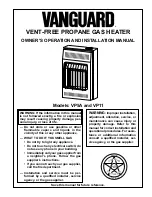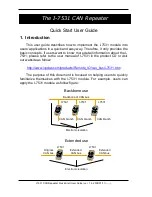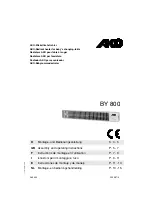
MILO ROCK - THERMOSTAT
ENGLISH
TO ESTABLISH COMMUNICATION BETWEEN THE
REMOTE CONTROL, THE THERMOSTAT AND THE
E3 TOUCH SCREEN (PAIRING):
• On the Touch Screen:
1. Go to Installation menu of the E3 Touch screen.
2. Press on “Radio Pairing” then press on “Heating”
3. Choose your Room and confi rm.
4. Then Press “to Radio Pairing”.
NOTE!
When you pair a remote control to a room, you
must pair the remote control fi rst and then you may pair
thermostats.
• On the remote control:
1. Press buttons “
+
” and “
-
” simultaneously for 5 seconds
(from the
mode) to access the installer mode
2. Press the “
OK
”, button of the transmitter until you
position yourself on segment “
3
”, to display “
rFb
” and
Radio frequency network transmission is fl ashing.
In this menu press “
-
” to select Uni directional communica-
tion) or “
rFb
” (Bi directional communication.
Press “+” to select Bi directional communication and
start radio transmission.
IMPORTANT:
“
rFb
” is proposed only to be used when you have a E3
Touch screen. Not possible to pair one remote control to
several radiators.
When the paring between the remote control and the
Touch screen is done, do the same manipulation as
To establish communication between the thermostat
alone and the E3 Touch screen.
3.
OPERATION
THE RADIATOR’S THERMOSTAT IS SHOWN ON PICTURE 2:
• 2a: On/Off switch.
• 2b: LED1, heat emitting indicator.
• 2c: LED2, surface temperature limitation indicator
and radio communication indicator.
• 2d: Push button
THE REMOTE CONTROL IS SHOWN ON PICTURE 3:
• 3a: OK/Mode button.
• 3b: Right/Left button.
• 3c: Behaviour indicator.
• 3d: Operating mode.
• 3e: Shown when installer menu active.
• 3f: Installer menu level.
• 3g: Key board lock.
• 3h: Radiator heating indicator.
• 3i: Indicates that the Room temperature is shown.
• 3j: Room temperature/Set temperature.
• 3k: Low battery indicator.
• 3l: Radio frequency transmission indicator.
GENERAL
The RF thermostat has an autonomous regulating system
that stores information about the working (on/standby)
and recommended temperature in the memory. Storing
the latest instructions received ensures the regulation
even if the remote control is turned off or in the event of
worn out batteries.
In the event of a power cut, it is not necessary to pair up
the appliances again. Likewise, the thermostats will retain
the last operating modes received when switched on.
Modifying the instructions will be effective during the
next sending of the remote control.
16 | P16MI412 - A04-11/15
Press +
v3_P16MI412_- A04-11_15_MILO ROCK_ MANUAL EN-FR-N.indd 16
1/12/15 14:21













































